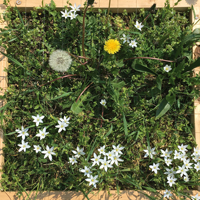
For a herbarium of the new fields
Commons fields in the contemporary city
Serena Savelli
Scholarships for landscape studies – second call, 2016/2017
Subject area Landscape design
tutor: Simonetta Zanon (research coordination Landscape projects) e Luigi Latini (chairman of the Scientific Committee)
The research focuses on the “new commons” of the contemporary city, to be understood not merely as grassy surfaces but rather in their broader and historical meaning of common field, that is public spaces – either urban or per-urban – of aggregation, for free exercise, daily or extraordinary, of a variety of civic customs and practices, either organised or spontaneous.
The first objective was the identification of a methodological proposal for the knowledge of this particular species of “urban nature”, not yet recognised or codified, yet clearly identifiable in its specific features by layout, uses, functions and manners of use. More specifically, one has implemented an inductive method inspired by systematic botany (hence the title) and based on recognition and identification, through an accurate description and comparison, of seven samples (the case studies of hypothetical “commons”).
The outcome of this first stage make up the original layout of an analytical sheet to assess and compare the distinctive characters of commons, general for the“species”. After the description, the hypothesis was assessed, only with the aim of obtaining a seemingly obvious description, of grass seen as floristic association and optimal solution for dealing with the space of new commons. Through a series of interviews to experts on fields (botanists, ecologists, agronomists and landscapers) some preliminary operative conclusions were obtained, to be validated in the field in the case study of Prato della Fiera of Treviso, a place which the Foundation is committed to through other projects as well. (S.S.)
Serena Savelli
Research Doctor in Design and Management of Environment and Landscape (La Sapienza University of Rome, November 2013), degree with honours at La Sapienza in Landscape Architecture and at the University of Florence in Forestry Sciences.
Her scientific interests deal with the kinaesthesia between walking and seeing the landscape (especially with landscape appreciation of cultural itineraries) as well as the analysis and appreciation of traditional agrarian landscapes. In recent years she hasdesigned itineraries for municipalities along the Cammini Lauretani and Via Francigena.and research activity on traditional agrarian landscapes at the departments of Bio- sciences and Territory of the University of Molise and Agrarian and Forestry Sciences of the University of Palermo.
She has authored papers on the aforementioned topics concerning the two specialisation areas.
